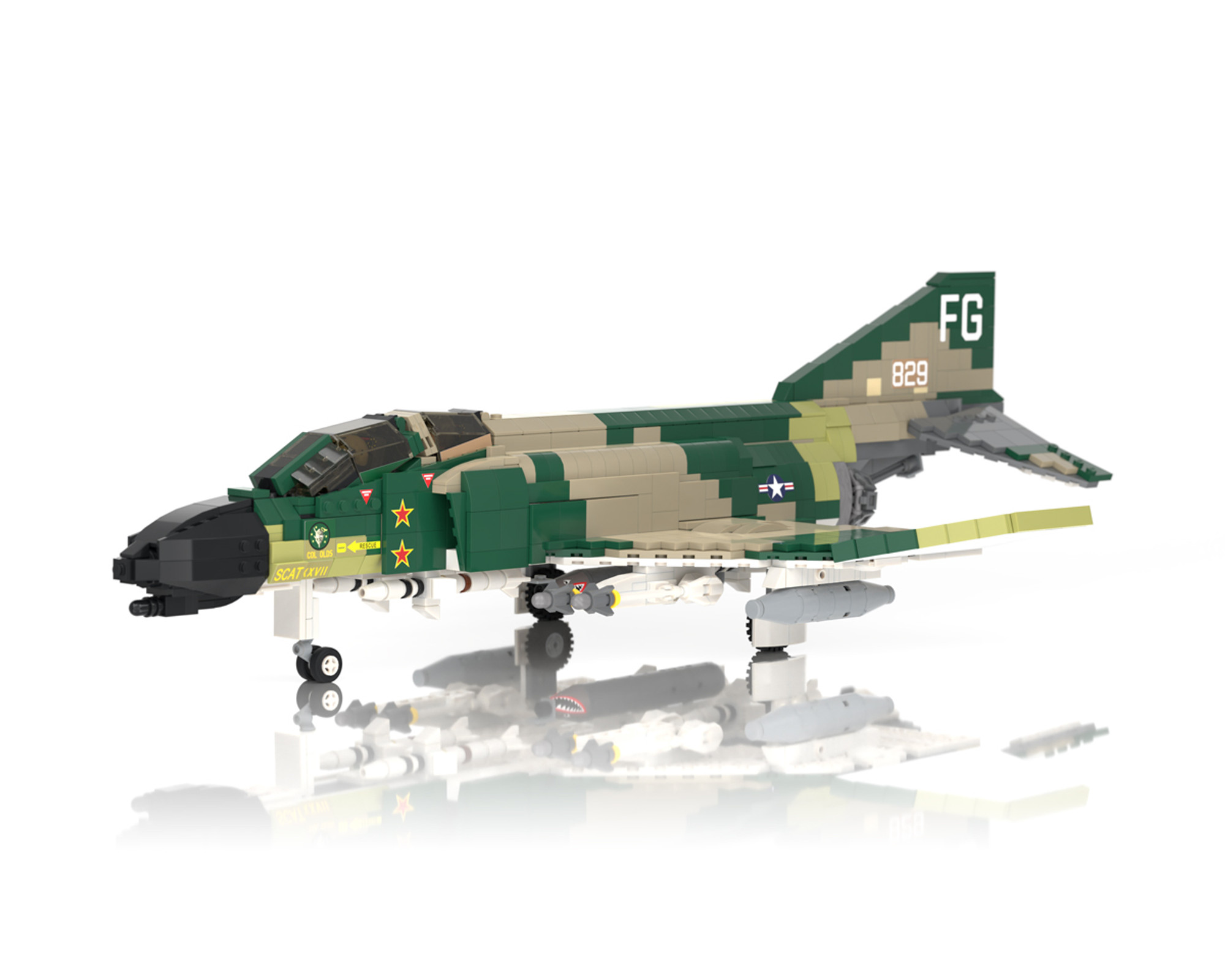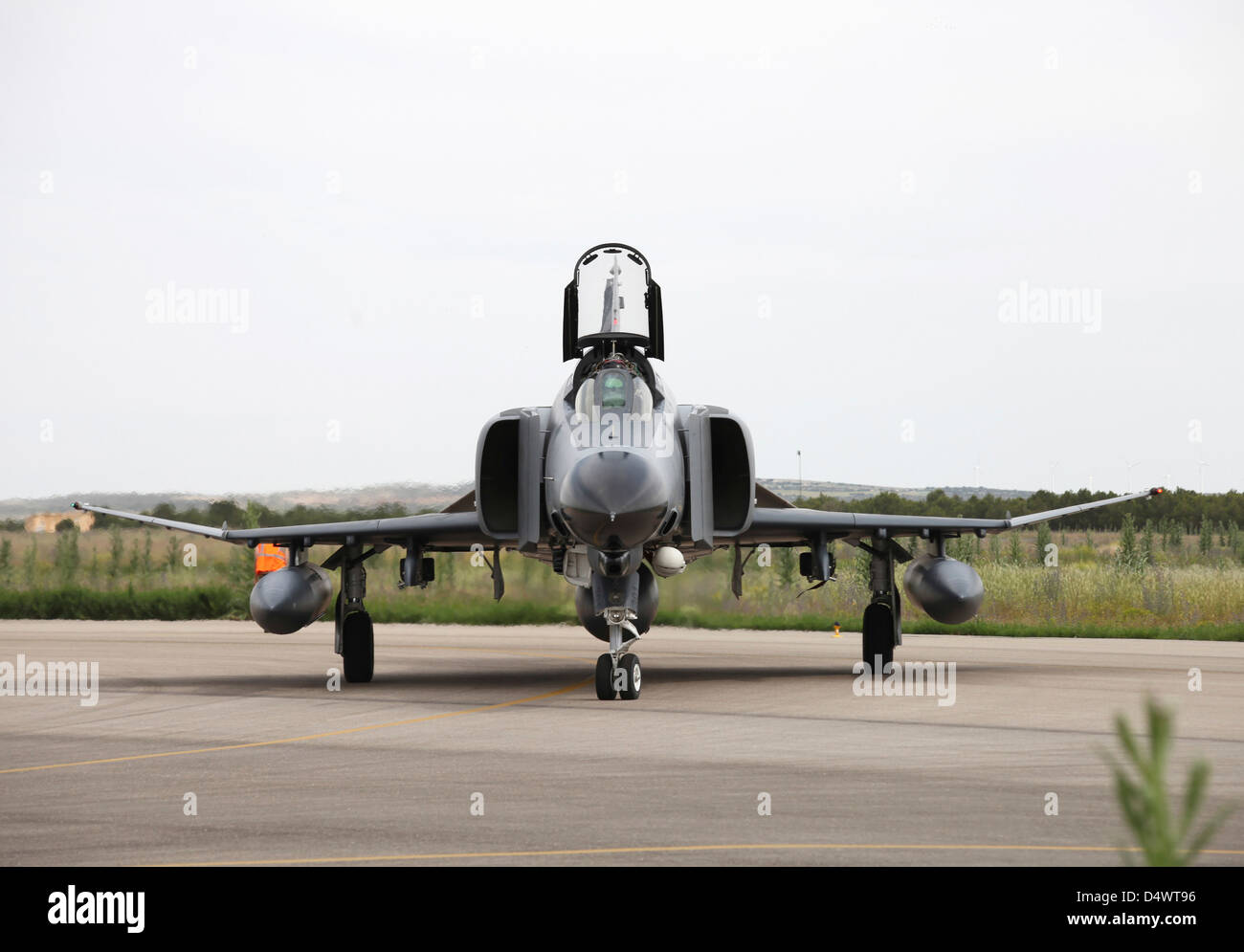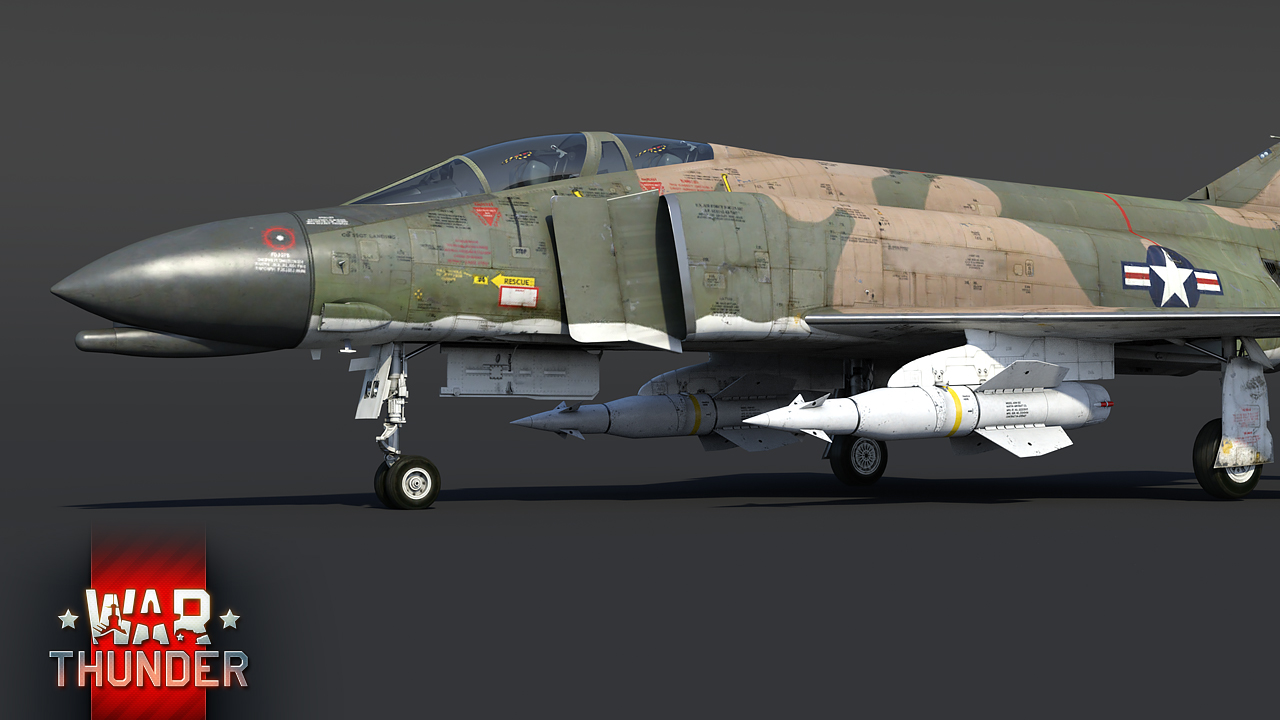F 4c Phantom - The American Tandem is a two-seat, twin-engine, all-weather, long-range supersonic jet interceptor and fighter-bomber, originally developed by the McDonnell Aircraft Company for the United States Navy.
Before it was adopted by the US Marine Corps and the US Air Force, and in the mid-1960s it became a staple of air weapons.
F 4c Phantom

With a total of 5,195 aircraft built between 1958 and 1981, the Phantom is the most produced American supersonic military aircraft in history and an iconic fighter of the Cold War.
Flight Deck Models 1:100 Mcdonnell Douglas F 4c Phantom: Uss Roosevelt \
The Phantom is a large fighter with a speed above Mach 2.2. It can carry more than 18,000 pounds (8,400 kg) of weapons on nine external hardpoints, including air-to-air missiles, air-to-surface missiles and a variety of bombs. The F-4, like other interceptors of its time, was originally designed without an internal cannon. Later models included the M61 Vulcan rotary cannon. Since 1959, he has set 15 world records in flight.
The F-4 was used extensively during the Vietnam War. It served as the primary air superiority fighter for the United States Air Force, Navy, and Marine Corps and played an important role in ground attack and aerial reconnaissance during the late war. During the Vietnam War, a US Air Force pilot, two weapons systems officers (WSOs),
A US Navy pilot and a radar intercept officer (RIO) have now achieved five aerial kills against fighters.
The F-4 continued to form the mainstay of the US Air Force throughout the 1970s and 1980s, gradually being replaced by modern aircraft such as the F-15 Eagle and F-16 Fighting Falcon of the US Air Force, F- 14 The Tomcat. in the US Navy, and the F/A-18 Hornet in the US Navy and US Marine Corps.
F 4 Phantom Ii 50th Anniversary
The F-4 Phantom II was used by the United States in the 1991 Persian Gulf War as a reconnaissance and field weapon (now Suppression of Air Defense) and was finally retired in 1996.
It is also the only aircraft used by the United States air demonstration teams: the US Air Force Thunderbirds (F-4E) and the US Navy Blue Angels (F-4J).
The F-4 is also operated by the armed forces of 11 countries. Israeli Phantoms saw significant combat in several Arab-Israeli conflicts, and the Shah of Iran used a large Phantom fleet in the Iran-Iraq War, which took place before his fall. In 2021, 63 years after its first flight, the F-4 remains in active service with the air forces of Iran, South Korea, Greece and Turkey. The plane is in service against the Islamic State group in the Middle East.

In 1952, CEO Jim McDonnell named Dave Lewis, McDonnell's head of aerodynamics, the company's design manager.
Amazon.com: High Flying Models Mcdonnell Douglas F 4c Phantom 1/100 Diecast Aircraft Model
With no new aircraft competition on the horizon, internal research revealed that the fleet had the greatest need for a new and differentiated type of aircraft: the fighter.
In 1953, McDonnell Aircraft began work on the F3H Sea Demon fighter, seeking increased capacity and better performance. The company developed a number of projects, including the powered variant of the Wright J67 engine,
The J79-powered version promised a top speed of Mach 1.97. On September 19, 1953, McDonnell approached the US Navy with a proposal for the Super Demon. Normally, the aircraft was meant to be modular, as it could be equipped with single or double nose cones for different missions, with different nose cones to accommodate radar, cameras, four 20 mm (.79) guns or 56 FFARs. additional nine hard point rockets under the wing. The Navy placed a full order for the F3H-G/H, but the upcoming Grumman XF9F-9 and Vought XF8U-1 filled the need for a supersonic fighter.
Therefore, McDonnell's design was revised to a fighter-bomber at all times with 11 external hardpoints for the weapon and on October 18, 1954 the company received a letter of intent for two YAH-1 prototypes. On May 26, 1955, four Navy officers arrived at McDonnell's office and within an hour presented the company with a new set of demands. Because the Navy already had the Douglas A-4 Skyhawk for surface attack and the F-8 Crusader for dogfighting, the project had to meet the current need for a fleet of all-weather interceptors. A second crew was added to operate the powerful radar;
Academy 12294 1/48 F 4c Vietnamese Model Kit
The XF4H-1 is designed to carry four AAM-N-6 Sparrow III guided missiles and two J79-GE-8 engines. As in the McDonnell F-101 Voodoo, the engines sit low in the fuselage to maximize internal fuel capacity and air absorption through a fixed fuselage geometry. The thin wing had a 45° angle and was equipped with spoilers for better low speed handling.
In order not to change the critical titanium section of the aircraft, the McDonnell developers increased the outer parts of the wings by 12 °, which is 5 ° higher than the average rubber wing. The wings also received a distinctive "dog tooth" to improve control at high angles of attack. The full-action tailplane is 23° anhedral to improve control at high angles of attack while maintaining the tailplane without exhaust gin.
In addition, the air intake is equipped with a fixed ramp and a variable geometry ramp, designed to restore maximum thrust at Mach 1.4 and Mach 2.2 with an angle. The air flow was achieved by rotating the exhaust nozzle as high air matches with gin and gin. All-weather interception capability was achieved using the AN/APQ-50 radar. To meet the operator's operational requirements, the landing gear is designed to withstand landing with a maximum pitch speed of 23 feet / s (7 m / s), and the nose wire can be extended 20 (51 cm) to increase the angle of attack. . in the catapult part of the flight.

On July 25, 1955, the Navy ordered two XF4H-1 test aircraft and five pre-production YF4H-1 prototypes. The Phantom Maiden was launched on May 27, 1958 by Robert S. Managed by Little. A hydraulic problem prevented the landing gear from retracting, but subsequent flights were smoother. Initial tests resulted in a redesigned air intake, including a unique combination of 12,500 holes to "bleed" air from the slowly moving boundary layer from the surface of each intake ramp. Series production aircraft also have splitter plates that move the boundary layer away from the engine inlet. The aircraft was soon in competition with the XF8U-3 Crusader III. Due to the complexity of the cockpit, the Navy wanted a two-seat aircraft, and on December 17, 1958, the F4H was announced as the winner. Delays with the J79-GE-8 engines meant that the first production aircraft were equipped with J79-GE-2 and −2A engines, each of which had a thrust of 16,100 lb (71.8 kN). In 1959, the Phantom began carrier suitability testing and the first full recovery cycle took place on February 15, 1960, from Independence.
F 4c Hi Res Stock Photography And Images
The D-plane was given the less controversial designation Phantom II, the first Phantom was another McDonnell fighter, the Phantom FH-1. The Phantom II was briefly designated F-110A and designated "Spectacle" by the USAF, but was never officially used.
Early in production, the Westinghouse AN/APQ-72, AN/APG-50 radar was upgraded with a larger radar antenna, required a pointed nose, and was redesigned to improve visibility and make the rear cockpit less claustrophobic.
The USN F4H-1 (redesignated F-4A in 1962) was powered by the J79-GE-2 and -2A with 16,100 lb (71.62 kN) thrust, later receiving -8 g. A total of 45 F-4As were built; none had seen combat, and most were test or training aircraft.
USN and USMC received first precision Phantom, F-4B, Westinghouse APQ-72 radar (impulse only), Texas Instruments AAA-4 Infrared Search and Under-Nose Track, AN/AJB-3 Bombing System and J79-GE-8 . , the -8A and -8B were powered by 10,900 lb (48.5 kN) dry and 16,950 lb (75.4 kN) afterburners (heaters) with their first flight on March 25, 1961. 649 F-4Bs were built beginning in 1961 with VF- 121 Peacekeepers received the first example at Miramar NAS.
F 4c Phantom Ii
The USAF acquired the Phantoms as a result of Secretary of Defense Robert McNamara's push to create a unified fighter jet for all branches of the US military. After the F-4B's successful "Operation High Speed" flight against the Convair F-106 Delta Dart, the USAF took delivery of two Navy F-4Bs, briefly designated the F-110A in January 1962, and developed the requirements for him own version. In contrast to the US Navy's focus on air-to-air in the fleet air defense (FAD) mission, the USAF emphasized the role of air-to-air and air-to-surface bombers. McNamara's merger on September 18, 1962 became the Phantom F-4, a naval version of the F-4B and USAF F-4C. The first Air Force Phantom flew on May 27, 1963, surpassing Mach 2 on a maiden flight.
The F-4J has improved both air-to-air and ground attack capabilities. Deliveries began in 1966 and in 1972 522 were built.
It is equipped with J79-GE-10 engines, 17,844 lb (79,374 kn) thrust, Westinghouse AN/AWG-10 Fire Control System (as the first F-4J fighter).

Sig p365 tulster holster, sig p365 iwb holster, sig holsters p365, sig p365 sas holster, sig p365 xl holster, sig p365 hybrid holster, appendix holster sig p365, safariland holster sig p365, sig p365 belt holster, sig p365 holster, sig p365 purse holster, sig sauer p365 holster
0 Comments